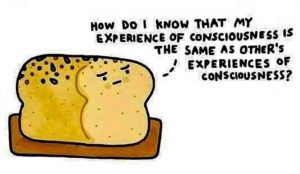*** Read Part 1 ***
Mantra 1
हरिः ॐ।
ॐ इत्येतदक्शर्मिदं सर्वं तस्योपव्याख्यानं भूतं भवद्ः भ्विष्य्दिति सर्वमोंकार एव।
यच्चान्यत्ः त्रिकालातीतं तदप्योंकार एव॥ १॥
hariH OM |
OM ityetadakSharamidaM sarvaM tasyopavyAkhyAnaM bhUtaM bhavadH bhaviShyaditi sarvamoMkAra eva |
yachchaanyatH trikAlAtItaM tadapyoMkAra eva || 1 ||
OM iti etad akSharam – Thus, this syllable OM
idam sarvaM – (is) all this.
tasya upavyAkhyAna – The explanation begins with this:
oMkAra – the syllable OM (is)
iti eva – thus truly
sarvaM – everything –
bhUta – past,
bhavat – present
bhaviShyat – (and) future.
yat cha anya – and what is other than
atIta – transcending these
trikAla – three time periods
tat eva – even is that only
oMkAra – OM
api – as well.
The syllable OM is everything. The explanation follows (with this Upanishad). All that is past, present and future is OM. And, whatever is beyond the three periods of time, that too is only OM.
Continue reading
 The Post on “
The Post on “ Narada climbs up the staircase from Name up to Spirit almost hopping and jumping spurred by his own enthusiasm and curiosity. He asks his venerable teacher at each step after meditating, “What’s next?” He, however, falls absolutely silent after meditation at the level of Spirit, the 15th itself. He has another flight of steps to take to reach the Ultimate, the Absolute!
Narada climbs up the staircase from Name up to Spirit almost hopping and jumping spurred by his own enthusiasm and curiosity. He asks his venerable teacher at each step after meditating, “What’s next?” He, however, falls absolutely silent after meditation at the level of Spirit, the 15th itself. He has another flight of steps to take to reach the Ultimate, the Absolute! Shankara opens his commentary on the 6th chapter of chAndogya with a very brief intro. bringing out the context of Svetaketu’s story and its relationship (sambandha) to the rest of the Upanishad. He says that the 6th chapter explains two important points, which are:
Shankara opens his commentary on the 6th chapter of chAndogya with a very brief intro. bringing out the context of Svetaketu’s story and its relationship (sambandha) to the rest of the Upanishad. He says that the 6th chapter explains two important points, which are: Quoting from the talk of an Advaita teacher on the message of the aitareya Upanishad:
Quoting from the talk of an Advaita teacher on the message of the aitareya Upanishad: